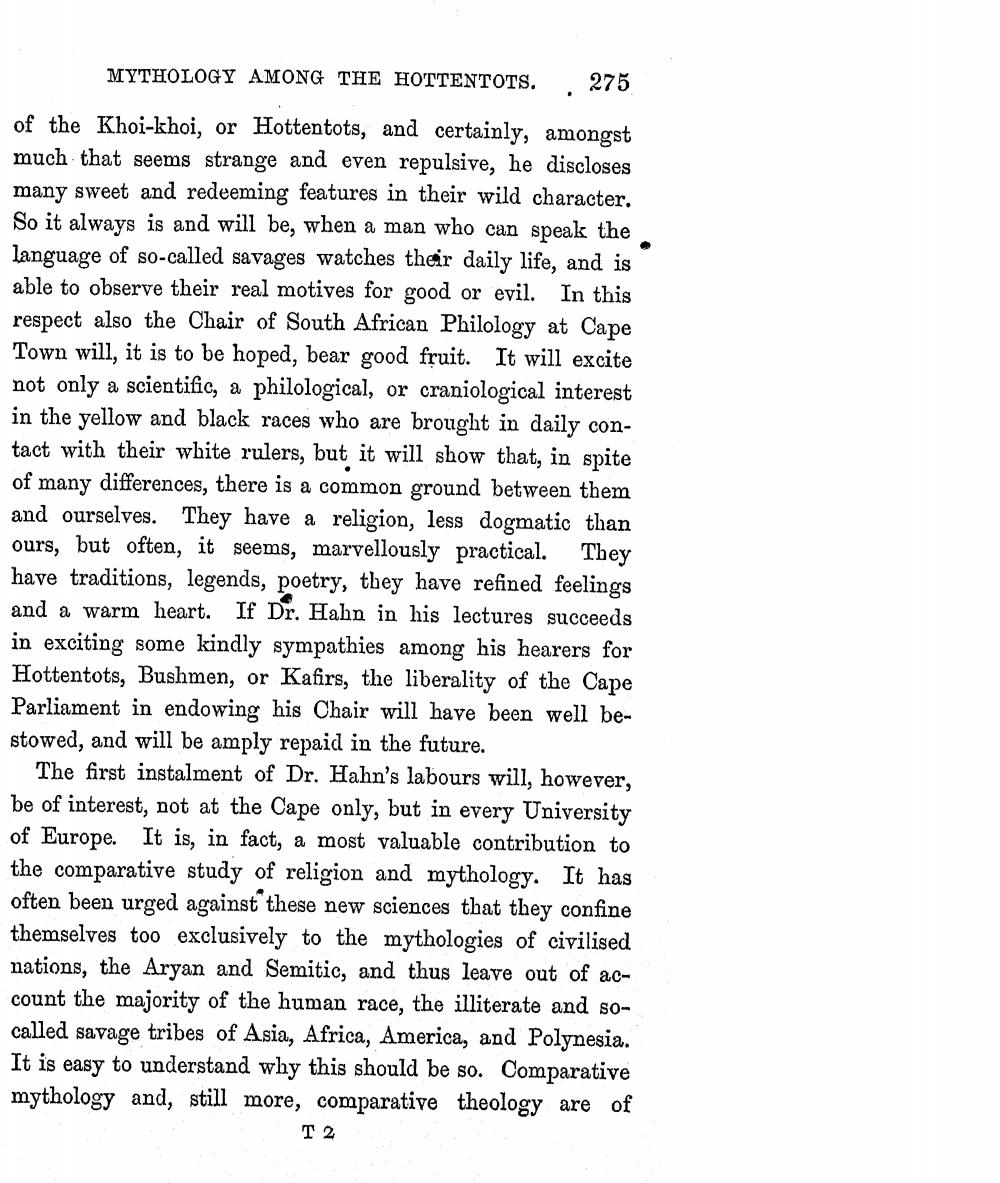________________
MYTHOLOGY AMONG THE HOTTENTOTS.
275
of the Khoi-khoi, or Hottentots, and certainly, amongst much that seems strange and even repulsive, he discloses many sweet and redeeming features in their wild character. So it always is and will be, when a man who can speak the language of so-called savages watches their daily life, and is able to observe their real motives for good or evil. In this respect also the Chair of South African Philology at Cape Town will, it is to be hoped, bear good fruit. It will excite not only a scientific, a philological, or craniological interest in the yellow and black races who are brought in daily contact with their white rulers, but it will show that, in spite of many differences, there is a common ground between them and ourselves. They have a religion, less dogmatic than ours, but often, it seems, marvellously practical. They have traditions, legends, poetry, they have refined feelings and a warm heart. If Dr. Hahn in his lectures succeeds in exciting some kindly sympathies among his hearers for Hottentots, Bushmen, or Kafirs, the liberality of the Cape Parliament in endowing his Chair will have been well bestowed, and will be amply repaid in the future.
The first instalment of Dr. Hahn's labours will, however, be of interest, not at the Cape only, but in every University of Europe. It is, in fact, a most valuable contribution to the comparative study of religion and mythology. It has often been urged against these new sciences that they confine themselves too exclusively to the mythologies of civilised nations, the Aryan and Semitic, and thus leave out of account the majority of the human race, the illiterate and socalled savage tribes of Asia, Africa, America, and Polynesia. It is easy to understand why this should be so. Comparative mythology and, still more, comparative theology are of
T 2




